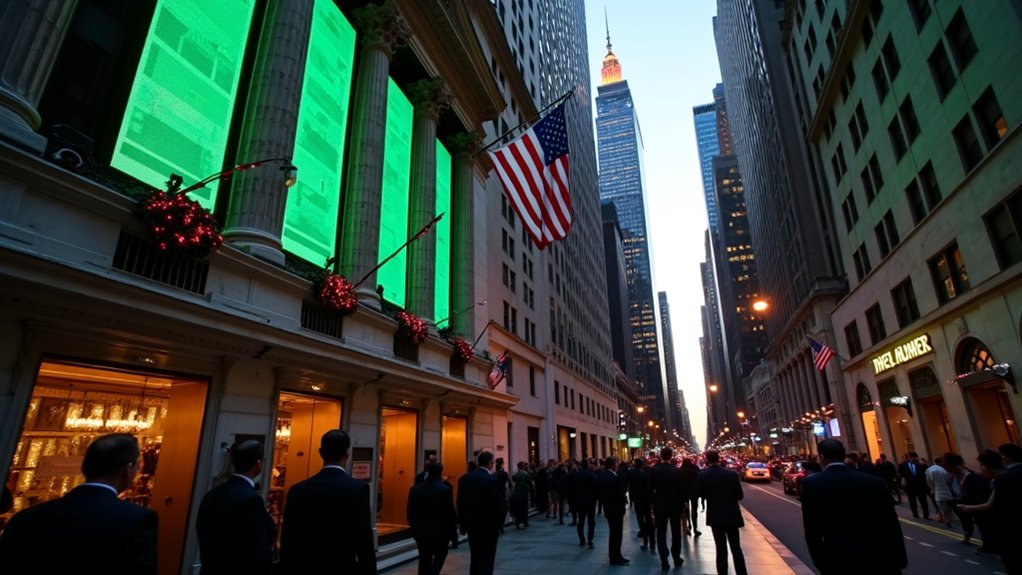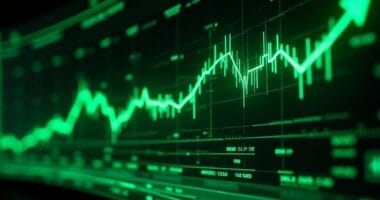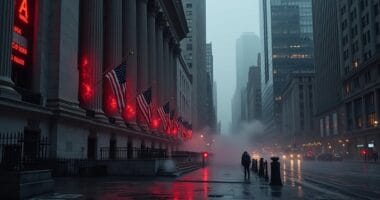Trump’s presidency danced to Wall Street’s tune, with markets swaying to his every tweet. His economic policies – massive corporate tax cuts, deregulation sprees, and that messy China trade war – kept traders on their toes. While big corporations cashed in, farmers got crushed by tariffs and small businesses struggled. The Federal Reserve faced constant pressure to keep rates low, proving that when Wall Street whispered, Trump’s White House listened. The full story goes deeper than the numbers suggest.

As Donald Trump’s presidency reshaped American economic policy, the markets rode a rollercoaster of tweets, tariffs, and tax cuts that left both Wall Street and Main Street dizzy. The stock market whipsawed with each policy announcement, turning seasoned traders into Twitter-obsessed news junkies desperately trying to predict the next move. Experts suggest consumer behavior remains one of the strongest market influencers despite presidential actions.
Corporate America got its wish with massive tax cuts that sent profits soaring and stock buybacks through the roof. Big business loved it. Small businesses? Not so much. While Fortune 500 companies celebrated their windfall, mom-and-pop shops struggled with rising healthcare costs. The federal deficit ballooned, but hey, who’s counting? Many businesses had to reconsider their retirement plans as economic uncertainties mounted.
Tax cuts showered big corporations with profits while small businesses got the scraps, watching healthcare costs eat their lunch.
The trade war with China hit like a freight train. Farmers watched their soybeans rot while manufacturers scrambled to rebuild supply chains overnight. Steel and aluminum producers popped champagne while everyone else paid higher prices. Markets bounced up and down like a yo-yo with each new tariff announcement.
Deregulation became the name of the game. Energy companies threw environmental rules out the window, banks loosened their belts, and fossil fuel executives did victory laps. Meanwhile, renewable energy companies got the cold shoulder, and climate scientists pulled their hair out.
Immigration crackdowns left farms without workers and Silicon Valley screaming for talent. Construction sites fell silent. Local economies in immigrant communities took a nosedive. Sure, some U.S. workers found jobs, but productivity barely budged. The Russell 2000 index of smaller U.S. companies saw gains of 5-6 percent as domestic strength returned.
The Federal Reserve faced relentless pressure to keep interest rates low. Wall Street loved the cheap money party, even as inflation risks crept higher. The President tweeted, the Fed squirmed, and economists reached for their antacids.
Through it all, market volatility became the new normal. Traders developed a pavlovian response to presidential tweets. Infrastructure stocks surged on promises that never materialized. International trade became a game of chicken. In the end, Wall Street adapted to the chaos – because that’s what markets do.





